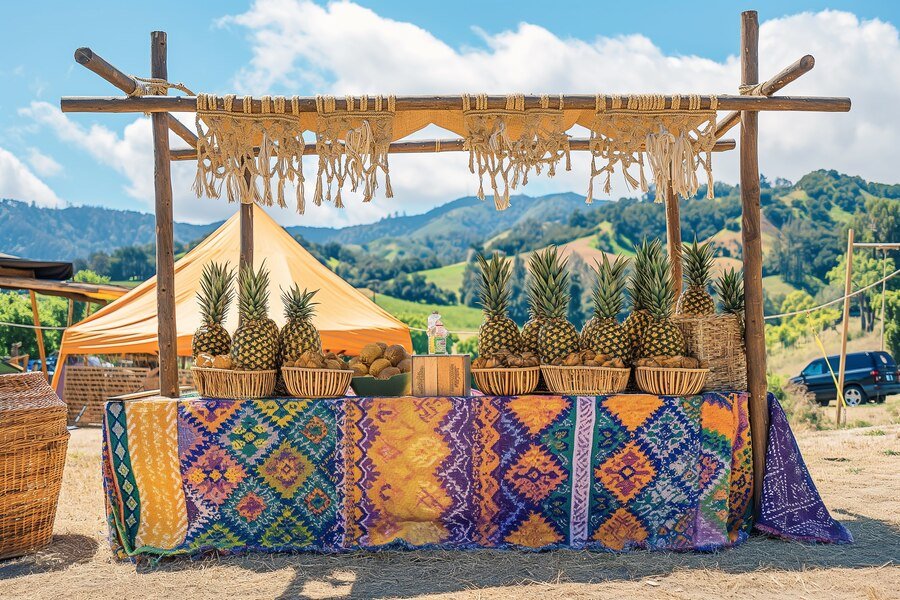Känätääj is a term that evokes images of a unique and colorful culture deeply rooted in history, tradition, and a strong sense of community. While it might sound unfamiliar to many, Känätääj represents a region that has developed its own distinct identity, blending ancient customs with modern influences. This region has a rich cultural heritage that reflects a tapestry of traditions passed down through generations, making it an intriguing place for anyone interested in history, art, and community life.
In this article, we’ll explore the key aspects that make Känätääj a fascinating subject, from its historical background to the ways its people are preserving their cultural heritage in today’s globalized world.
The Historical Roots of Känätääj
The history of Känätääj is one of resilience and adaptation. Its people have long maintained a strong connection to their land, preserving their traditions despite external pressures and changes brought about by modernization. The region is known for being home to several ancient civilizations, each of which left its mark on the area’s culture, language, and customs.
Archaeological evidence points to a rich history of trade and interaction with neighboring regions, which helped shape Känätääj into a melting pot of influences. The people of Känätääj are proud of their heritage, and this pride is evident in the preservation of their ancient festivals, rituals, and artistic expressions.
Language: A Vital Part of Känätääj’s Identity
One of the most distinctive aspects of Känätääj is its language. The Känätääji language is a unique dialect that has been preserved through oral traditions and written texts over centuries. Although the influence of modern languages has grown in the region, there is a strong movement to keep the native language alive.
Schools in Känätääj often include the local language in their curriculum, and there are community programs aimed at teaching the younger generation the importance of linguistic heritage. Language is more than just a communication tool in Känätääj—it’s a vital part of the people’s identity and a symbol of their connection to their ancestors.
Celebrations and Festivals: The Heartbeat of Känätääj
Festivals are an essential part of life in Känätääj, offering a window into the region’s deep cultural roots. These celebrations are often colorful, vibrant, and filled with traditional music, dance, and food. Each festival in Känätääj tells a story, whether it’s about the changing of seasons, a historical event, or a religious observance.
One of the most significant festivals in Känätääj is the Festival of Harvest, a time when the community comes together to celebrate the bounty of the land. Traditional music fills the air, and people dress in their finest garments to participate in dances that have been passed down through generations. This festival, like many others in the region, emphasizes the close-knit nature of the Känätääj community and their respect for the land.
Känätääj Art: A Legacy of Creativity
The artistic traditions of Känätääj are as diverse as they are ancient. From pottery and weaving to intricate jewelry and sculpture, Känätääj art reflects a deep appreciation for craftsmanship and creativity. Many artisans in the region continue to use traditional techniques passed down from their ancestors, ensuring that the legacy of Känätääj art lives on.
One of the most unique aspects of Känätääj art is its connection to nature. Much of the region’s artistic output is inspired by the natural world, with motifs of plants, animals, and landscapes appearing in everything from textiles to carvings. This deep relationship with nature is not only a reflection of the region’s geography but also of the people’s belief in living in harmony with the environment.
Cuisine: A Taste of Känätääj
No exploration of Känätääj would be complete without mentioning its rich culinary traditions. The cuisine of Känätääj is a reflection of the region’s agricultural abundance, with ingredients like grains, vegetables, and spices playing a prominent role. Traditional dishes are often prepared with care and served during communal gatherings, reflecting the region’s emphasis on community and togetherness.
A typical meal in Känätääj might include dishes like grilled vegetables seasoned with local herbs, accompanied by handmade bread and spiced stews. Sweet treats like honey-drenched pastries and fruit compotes are often served during festivals and special occasions. The food of Känätääj is not just about sustenance—it’s a way for the people to celebrate their land and culture.
Preserving Känätääj’s Cultural Heritage in a Modern World
In today’s globalized world, maintaining traditional customs can be a challenge. However, the people of Känätääj are committed to preserving their cultural heritage for future generations. Community leaders, educators, and cultural organizations in the region have taken active steps to ensure that Känätääj’s rich history and traditions are not lost in the face of modernization.
One of the key efforts in this regard is the promotion of cultural tourism. Visitors from around the world are encouraged to come to Känätääj to experience its unique festivals, sample its cuisine, and learn about its history. This influx of visitors not only supports the local economy but also helps raise awareness about the importance of preserving Känätääj’s cultural heritage.
Additionally, there are efforts to document and digitize the region’s oral histories, ensuring that these stories are preserved for future generations. Schools in Känätääj continue to play a vital role in educating the younger generation about their cultural roots, incorporating traditional practices into the curriculum alongside modern subjects.
The Role of Community in Känätääj
At the heart of Känätääj culture is a strong sense of community. The people of Känätääj value cooperation and mutual support, with families often living close together and participating in communal activities. This sense of community extends to their festivals, celebrations, and daily life, where helping one another is not just encouraged but expected.

Community gatherings are a regular occurrence in Känätääj, whether for celebrations, agricultural work, or religious observances. These gatherings reinforce the bonds between community members and ensure that the traditions and values of Känätääj continue to be passed down from one generation to the next.
Conclusion
Känätääj is more than just a place—it’s a vibrant and living culture that continues to thrive in a rapidly changing world. Its people are deeply connected to their land, traditions, and each other, making Känätääj a unique region that offers valuable lessons about community, heritage, and resilience. From its ancient festivals to its modern efforts to preserve its language and traditions, Känätääj stands as a testament to the enduring power of cultural identity.
For those interested in history, culture, and the art of storytelling, Känätääj is a region worth exploring. Whether you’re drawn to its rich culinary traditions, its vibrant festivals, or its intricate art, Känätääj offers a glimpse into a world where tradition and modernity coexist in harmony.











